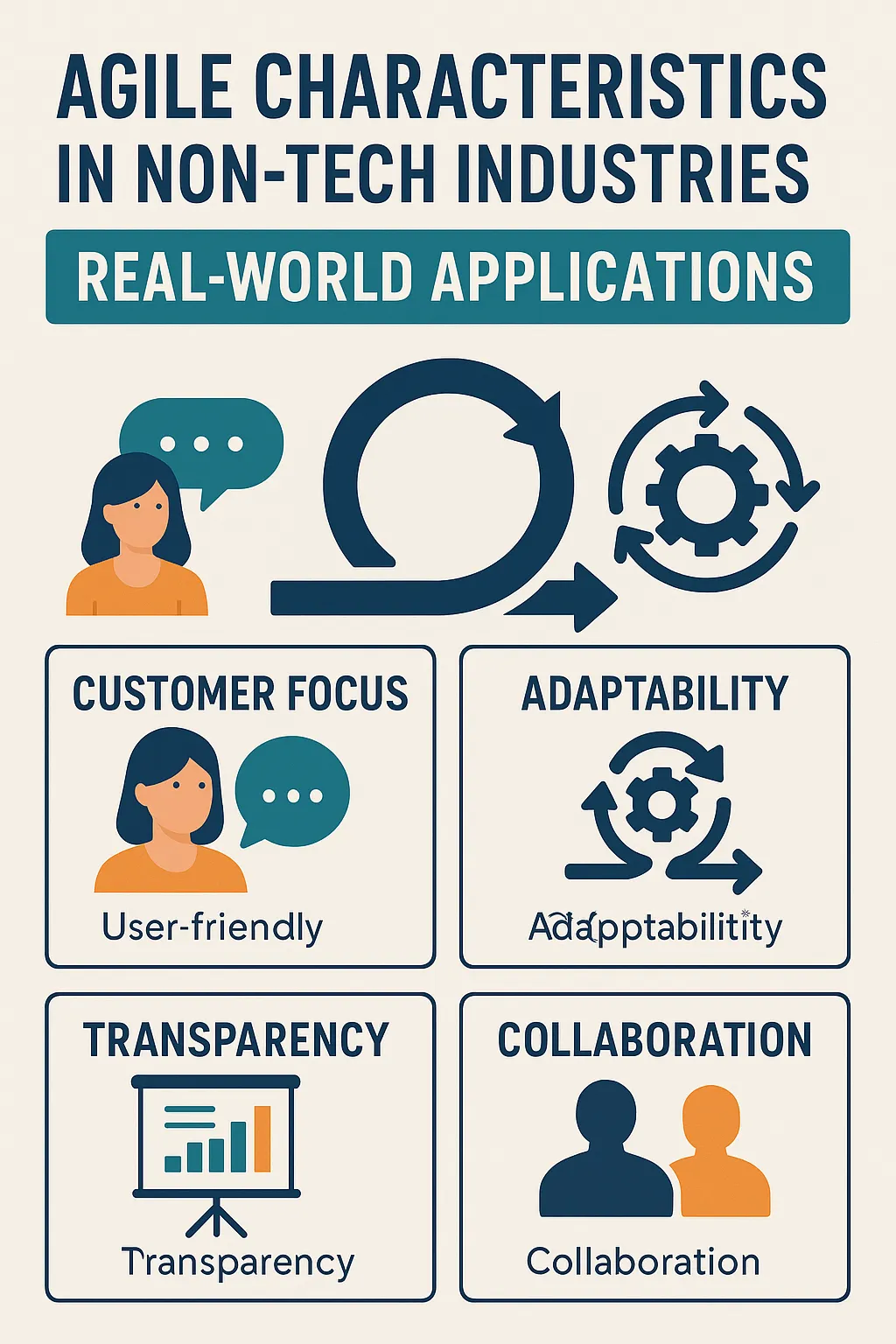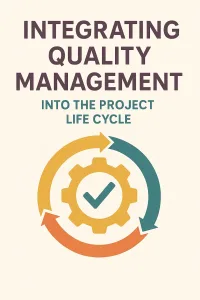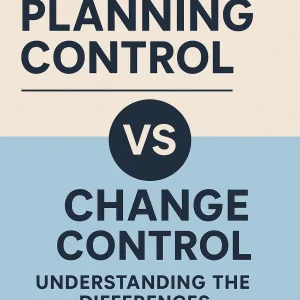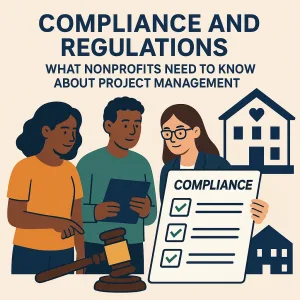Introduction to Agile Methodology
Agile methodology has emerged as a transformative approach to project management, transcending its origins in the software development sector to find applications across various industries. This section aims to provide project managers in diverse fields with a foundational understanding of agile methodology, its historical evolution, and its core principles.
Definition of Agile Methodology
Agile methodology is a project management framework that emphasizes flexibility, collaboration, and customer-centricity. It is characterized by iterative development, where projects are divided into small, manageable units called iterations or sprints. This approach allows teams to adapt to changes quickly, respond to feedback, and deliver value incrementally. Agile prioritizes working solutions over comprehensive documentation, fostering a culture of continuous improvement and responsiveness to stakeholder needs.
Brief History and Evolution of Agile Practices
The roots of agile methodology can be traced back to the early 2000s when a group of software developers sought to address the limitations of traditional project management approaches, such as the Waterfall model. In 2001, these developers came together to create the Agile Manifesto, which laid the groundwork for agile practices. The manifesto emphasized four key values:
- Individuals and interactions over processes and tools: This value highlights the importance of team collaboration and communication.
- Working software over comprehensive documentation: Agile focuses on delivering functional products rather than getting bogged down in extensive paperwork.
- Customer collaboration over contract negotiation: Agile encourages ongoing engagement with customers to ensure their needs are met throughout the project lifecycle.
- Responding to change over following a plan: Agile embraces change as a natural part of the project process, allowing teams to pivot as necessary.
Since its inception, agile has evolved through various frameworks and methodologies, including Scrum, Kanban, and Lean, each offering unique practices and tools to enhance project delivery.
Core Principles of Agile as Outlined in the Agile Manifesto
The Agile Manifesto is underpinned by twelve principles that guide agile practices. These principles include:
- Customer satisfaction through early and continuous delivery: Delivering valuable software to customers frequently ensures their needs are met.
- Welcoming changing requirements: Agile teams are encouraged to adapt to changes, even late in development, to provide the best possible outcome.
- Frequent delivery of working software: Regularly delivering functional increments keeps stakeholders engaged and informed.
- Collaboration between business stakeholders and developers: Close cooperation fosters a shared understanding of project goals and requirements.
- Motivated individuals: Providing a supportive environment empowers teams to take ownership of their work.
- Face-to-face conversation: Direct communication is the most effective way to convey information within a team.
- Working software as the primary measure of progress: The focus is on delivering functional products rather than adhering strictly to timelines or budgets.
- Sustainable development: Agile promotes a balanced pace of work to maintain productivity over the long term.
- Technical excellence and good design: High-quality work enhances agility and adaptability.
- Simplicity: The art of maximizing the amount of work not done is essential to agile success.
- Self-organizing teams: Teams that manage their own work are often more effective and innovative.
- Regular reflection and adjustment: Teams should regularly assess their performance and make necessary adjustments to improve efficiency and effectiveness.
By understanding these foundational elements of agile methodology, project managers in non-tech industries can better appreciate its potential to enhance project outcomes and foster a culture of adaptability and collaboration. As agile practices continue to gain traction beyond IT, the principles outlined in the Agile Manifesto serve as a guiding framework for successful implementation across various sectors.
The Importance of Agile in Non-Tech Industries
In recent years, the adoption of agile methodologies has transcended the boundaries of the technology sector, making significant inroads into various non-tech industries. This shift is driven by several trends and the recognition of the unique benefits that agile practices can offer organizations outside of IT. Here, we explore the key trends fueling this adoption, the advantages of agile for non-tech organizations, and a comparison between traditional project management and agile approaches.
Trends Driving the Adoption of Agile in Various Industries
- Market Volatility: Industries such as healthcare, finance, and manufacturing are increasingly facing rapid changes in market conditions and consumer demands. Agile methodologies allow organizations to adapt quickly to these fluctuations, ensuring they remain competitive and relevant.
- Customer-Centric Focus: There is a growing emphasis on customer satisfaction across all sectors. Agile practices prioritize customer feedback and iterative development, enabling organizations to deliver products and services that better meet customer needs.
- Cross-Functional Collaboration: Non-tech industries are recognizing the value of breaking down silos between departments. Agile encourages collaboration across teams, fostering innovation and improving overall project outcomes.
- Digital Transformation: As organizations in various sectors undergo digital transformation, agile practices provide a framework for managing change effectively. This is particularly relevant in industries like retail and logistics, where technology integration is crucial for operational success.
Benefits of Agile for Non-Tech Organizations
- Flexibility: Agile methodologies promote adaptability, allowing teams to pivot quickly in response to changing project requirements or market conditions. This flexibility is essential for organizations that operate in dynamic environments.
- Responsiveness: Agile practices enable teams to respond to customer feedback and market changes in real-time. This responsiveness leads to improved customer satisfaction and loyalty, as organizations can adjust their offerings based on direct input.
- Efficiency: By focusing on iterative progress and continuous improvement, agile methodologies help organizations streamline their processes. This efficiency can lead to reduced time-to-market for products and services, ultimately enhancing competitiveness.
- Enhanced Team Morale: Agile fosters a culture of collaboration and empowerment, which can lead to higher employee satisfaction and retention. Teams that feel valued and engaged are more likely to contribute positively to project outcomes.
Comparison of Traditional Project Management vs. Agile Approaches
- Planning and Execution: Traditional project management often relies on extensive upfront planning and a linear execution process. In contrast, agile emphasizes iterative planning and execution, allowing teams to adapt as they progress through the project lifecycle.
- Change Management: In traditional methodologies, changes to project scope can be disruptive and costly. Agile, however, embraces change as a natural part of the process, enabling teams to incorporate new insights and feedback without derailing the project.
- Stakeholder Engagement: Traditional project management typically involves limited stakeholder interaction until project milestones are reached. Agile encourages continuous stakeholder engagement, ensuring that their needs and expectations are consistently addressed throughout the project.
- Success Metrics: Success in traditional project management is often measured by adherence to timelines and budgets. Agile, on the other hand, focuses on delivering value to the customer and achieving project goals, which may include qualitative measures of success.
Key Agile Characteristics and Their Applications
Agile methodologies, originally developed for the software industry, have proven to be highly effective in various non-tech sectors. By embracing agile characteristics, project managers in diverse industries can enhance their project outcomes, foster collaboration, and respond more effectively to change. Below are key agile characteristics and their real-world applications outside of IT.
1. Iterative Development
- Definition: Iterative development involves breaking projects into smaller, manageable cycles or iterations, allowing teams to gather feedback and make improvements continuously.
- Application: In the construction industry, iterative development can be seen in the use of design-build methods. For instance, a construction firm may complete a section of a building, gather feedback from stakeholders, and then adjust the design for subsequent phases. This approach not only enhances quality but also reduces the risk of costly changes later in the project.
2. Cross-Functional Teams
- Definition: Agile promotes the formation of cross-functional teams that bring together individuals with diverse skill sets to collaborate on projects.
- Application: In the healthcare sector, cross-functional teams are increasingly utilized in patient care. For example, a team comprising doctors, nurses, social workers, and administrative staff can work together to develop a comprehensive care plan for patients. This collaboration ensures that all aspects of patient care are considered, leading to improved health outcomes and patient satisfaction.
3. Customer Collaboration
- Definition: Agile emphasizes the importance of engaging stakeholders throughout the project lifecycle to ensure that their needs and feedback are incorporated.
- Application: In the marketing industry, agile methodologies are applied through iterative campaign development. Marketing teams often involve clients in brainstorming sessions and feedback loops, allowing for real-time adjustments to campaigns based on customer insights. This collaborative approach leads to more effective marketing strategies and higher client satisfaction.
4. Emphasis on Adaptability
- Definition: Agile methodologies prioritize adaptability, enabling teams to respond to changes in requirements or market conditions rather than adhering strictly to a predetermined plan.
- Application: In the education sector, agile principles can be applied in curriculum development. Educational institutions can pilot new programs, gather feedback from students and faculty, and make necessary adjustments before full implementation. This flexibility allows schools to better meet the evolving needs of their students and the job market.
Challenges and Solutions in Adopting Agile
Transitioning to agile methodologies can present several challenges, particularly for organizations in non-tech industries. However, understanding these hurdles and implementing effective solutions can facilitate a smoother adoption process. Here are some key challenges and corresponding strategies to overcome them:
1. Resistance to Change: Addressing Cultural Barriers
- Understanding Resistance: Many employees may be accustomed to traditional project management approaches, leading to skepticism about agile practices. This resistance often stems from fear of the unknown or concerns about job security.
- Solution: To address this, organizations should foster a culture of openness and communication. Engaging employees early in the transition process through workshops and discussions can help demystify agile practices. Highlighting success stories from other industries can also illustrate the benefits of agile, making it more relatable and less intimidating.
2. Training Needs: Importance of Upskilling Teams
- Identifying Skill Gaps: Agile methodologies require specific skills and mindsets that may not be present in all team members. This gap can hinder effective implementation and lead to frustration.
- Solution: Investing in comprehensive training programs is crucial. Organizations should provide tailored training sessions that focus on agile principles, tools, and practices. Additionally, mentoring and coaching can support teams as they navigate the transition, ensuring they feel confident in their new roles.
3. Maintaining Stakeholder Engagement Throughout the Process
- Challenges with Stakeholder Buy-In: Keeping stakeholders engaged and informed can be challenging, especially if they are accustomed to a more traditional approach to project management. Disengagement can lead to misalignment and project delays.
- Solution: Regular communication is key. Implementing feedback loops and involving stakeholders in sprint reviews can help maintain their interest and investment in the project. Utilizing visual management tools, such as Kanban boards, can also provide stakeholders with clear visibility into project progress and foster a sense of collaboration.
4. Balancing Agile Principles with Regulatory Requirements
- Navigating Compliance Issues: In industries such as healthcare, finance, and manufacturing, regulatory requirements can complicate the adoption of agile methodologies. Organizations may struggle to reconcile agile’s flexibility with the need for compliance and documentation.
- Solution: To address this challenge, organizations should integrate agile practices with compliance frameworks from the outset. This can involve creating hybrid models that incorporate agile sprints while ensuring that necessary documentation and regulatory checks are in place. Engaging compliance experts during the planning phase can also help identify potential pitfalls and streamline processes.
Best Practices for Implementing Agile in Non-Tech Industries
Agile methodologies, often associated with the tech industry, have proven to be effective in various non-tech sectors as well. Project managers in diverse industries can leverage agile principles to enhance project outcomes, improve team collaboration, and respond more effectively to changing market demands. Here are some actionable strategies for successfully implementing agile in non-tech environments:
1. Start Small: Pilot Projects to Test Agile Methods
- Begin with a Pilot Project: Select a small, manageable project to implement agile practices. This allows teams to experiment with agile methodologies without the pressure of a large-scale rollout. For instance, a marketing team could start with a campaign project to test iterative planning and feedback loops.
- Evaluate and Iterate: After completing the pilot, gather feedback from team members and stakeholders to assess what worked and what didn’t. Use these insights to refine the approach before scaling agile practices to larger projects.
2. Foster a Culture of Transparency and Trust
- Open Communication: Encourage open dialogue among team members and stakeholders. Regular check-ins and updates can help maintain transparency about project progress and challenges. This practice builds trust and ensures everyone is aligned with project goals.
- Empower Teams: Give teams the autonomy to make decisions related to their work. When team members feel trusted and valued, they are more likely to take ownership of their tasks and contribute to the project’s success.
3. Encourage Continuous Feedback and Adaptation
- Implement Regular Feedback Loops: Establish mechanisms for continuous feedback, such as daily stand-ups or weekly retrospectives. This allows teams to discuss progress, address obstacles, and adapt their strategies in real-time.
- Be Open to Change: Encourage a mindset that embraces change. In non-tech industries, market conditions and customer preferences can shift rapidly. Agile practices enable teams to pivot quickly in response to new information or feedback.
4. Utilize Agile Tools and Frameworks Suitable for Specific Industries
- Select Appropriate Tools: Choose agile tools that align with the specific needs of your industry. For example, a construction project might benefit from tools that facilitate collaboration and scheduling, while a healthcare project may require tools that ensure compliance and patient safety.
- Adopt Relevant Frameworks: Consider frameworks like Scrum or Kanban that can be tailored to fit the unique workflows of non-tech industries. For instance, a retail team might use Kanban to visualize inventory management processes, enhancing efficiency and responsiveness.
By implementing these best practices, project managers in non-tech industries can effectively adopt agile methodologies, leading to improved project outcomes and greater adaptability in a fast-paced environment. Embracing agile not only enhances project management processes but also fosters a culture of innovation and continuous improvement across diverse sectors.
Conclusion
In conclusion, the adoption of agile methodologies in non-tech industries has proven to be a transformative approach that enhances project management effectiveness across various sectors. The benefits of agile extend far beyond the realm of IT, offering significant advantages such as:
- Increased Flexibility: Agile allows teams to adapt quickly to changing requirements and market conditions, which is particularly beneficial in industries like healthcare and manufacturing where responsiveness is crucial.
- Enhanced Collaboration: By fostering a culture of teamwork and open communication, agile practices improve collaboration among stakeholders, leading to better project outcomes in sectors such as education and construction.
- Customer-Centric Focus: Agile emphasizes delivering value to customers through iterative development and feedback loops, which can be effectively applied in retail and service industries to enhance customer satisfaction and loyalty.
- Improved Risk Management: The iterative nature of agile helps in identifying and mitigating risks early in the project lifecycle, making it a valuable approach in sectors like finance and logistics where risk management is paramount.
As project managers in diverse industries consider the potential of agile methodologies, it is essential to explore how these practices can be tailored to fit specific organizational needs. We encourage you to take the initiative to implement agile principles within your teams and projects.
Moreover, sharing experiences and learnings from agile implementations can foster a community of practice that benefits all. By discussing successes and challenges, project managers can collectively refine their approaches and drive further innovation in their respective fields. Embrace the agile mindset and unlock the potential for enhanced project delivery and stakeholder engagement in your industry.
Find out more about Shaun Stoltz https://www.shaunstoltz.com/about/.
This post was written by an AI and reviewed/edited by a human.



